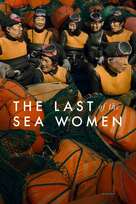Eye For Film >> Movies >> The Last Of The Sea Women (2024) Film Review
The Last Of The Sea Women
Reviewed by: Amber Wilkinson

Some short films stay with you. One of those for me was Liz Chae’s 2009 Tribeca-winning The Last Mermaids, which profiled the matriarchal skin-divers - known as “haenyeo” - of Jeju Island, an ageing set of swimmers who free-dive for seafood, including seafood and abalone. Some 15 years later, they’re taking centre stage on film again, in Apple TV+’s The Last of the Sea Women, which though again celebrating this unique craft feels like rather less of a deep dive into the subject despite its longer running time.
Quite a lot has changed for the haenyeo since 2009, although the problem of an ageing cohort remains; once they numbered 30,000 out of Jeju’s population of 200,000, now there less than 4,000 left. Some things have improved, however, not least the recognition that they get. Unesco put them on its “Intangible Cultural Heritage of Humanity” list in 2016 and this year the island celebrated its 7th haenyeo festival.

Most of the women interviewed are in their sixties and seventies, with some even older than that, and the film is at its strongest when we hear directly from them. “It’s a calling,” one says, as others describe how they came to the industry in the first place as children and the arduous nature of the work. They haven’t even been using diving suits and flippers that long and oxygen tanks are still shunned, although there’s no real interrogation of why this is.
This is a failing of Sue Kim’s film, in general, which too often scoots over things when it should take a breath and better look. A religious ceremony, for example, in which the haenyeo help to intercede with various gods is shown in chopped up pieces without any meaningful explanation of what is going on, making it feel voyeuristic and exoticised rather than as an exploration of what makes the community tick.
It turns out that there are some younger people interested in the pursuit. A school has been set up to train women in the trade - although I would dearly love to know why it appears to be run by a man. Elsewhere a couple of younger women, Sohee Jin and Jeongmin Woo, have found a way of making the work pay more, by making viral videos along the way. Casting a shadow over the film is the climate crisis. With warmer waters, yield is down, a situation that is further complicated by the news that the Japanese plan to release radioactive water from the stricken Fukushima plant. Again, Kim finds strength in letting the voice of the women as they raise it in protest, but somewhat disappointingly the outcome of their actions is left hanging in the air. It’s great to see the haenyeo celebrated once again, but it still feels as though much has been left unsaid.
Reviewed on: 10 Oct 2024
















